A subterranean wonderland awaits in Andhra Pradesh. Belum Caves, the second-largest cave system in India, weaves a captivating tapestry of nature and history within the Kurnool district. Stretching over 3 kilometers, these ancient caves beckon with cool, dimly lit passages adorned with stalactites and stalagmites – a mesmerizing display sculpted by time. Beyond the geological marvel, Belum Caves whisper tales of the past. Evidence suggests Jain and Buddhist monks once called these caves home, leaving behind serene meditation halls and unearthed relics as silent testaments to a bygone era. Adventure seekers, history buffs, and curious explorers alike will find themselves enthralled by Belum Caves. This guide equips you for an unforgettable journey, delving into practical tips, historical insights, and everything you need to make the most of exploring Andhra Pradesh’s hidden treasure.
How to reach:
Airports: The nearest major airports are Kempegowda International Airport in Bangalore (320 km) and Rajiv Gandhi International Airport in Hyderabad (350 km). Taxis and public transportation connect both airports to the caves.
Train: The closest railway station is Tadipatri (30 km away), well-connected to Bangalore, Hyderabad, and Chennai. Taxis and local buses are available from Tadipatri to Belum Caves.
Road: Belum Caves are easily accessible by road.
- From Bangalore (320 km): Take NH44 (Bangalore-Hyderabad highway) to Anantapur, proceed to Tadipatri, and follow signs to Belum Caves.
- From Hyderabad (350 km): Take NH44 towards Kurnool, continue to Banaganapalli, and follow local roads to the caves.
- From Anantapur (85 km): Take NH42 towards Tadipatri and then follow local roads to Belum Caves.
Bus: Regular buses run from major cities like Bangalore, Hyderabad, and Anantapur to Tadipatri. From there, local buses or taxis can take you directly to Belum Caves.
Local Transport: Taxis and auto-rickshaws are readily available near Tadipatri or Banaganapalli to reach the caves’ entrance. Consider booking return transportation in advance, especially during peak seasons.
Best time to visit:
Pleasant Exploration (October – March):
- Weather: Enjoy comfortable temperatures (15°C – 30°C) perfect for exploring the caves, which can be humid.
- Best For: Sightseeing, outdoor activities, and extended cave exploration due to the cool conditions.
- Highlights: Lush landscapes and comfortable temperatures make this the peak tourist season.
Summertime Considerations (April – June):
- Weather: Hot and dry, with temperatures exceeding 40°C.
- Best For: Avoiding, if possible. The intense heat can be uncomfortable inside the caves.
- Tips: If visiting during summer, plan your trip early mornings or evenings. Stay hydrated and wear light, breathable clothing.
Monsoonal Majesty (July – September):
- Weather: Warm and humid with moderate to heavy rainfall (25°C – 35°C).
- Best For: Witnessing the vibrant, green landscape, but with some caution.
- Highlights: The caves remain cool, but the surroundings can be slippery and muddy. Travel disruptions due to heavy rain are possible.
- Tips: Carry rain gear and check weather forecasts before your trip. Be prepared for potentially unreliable road conditions.
Attractions:
Simhadwaram (Lion’s Gate):
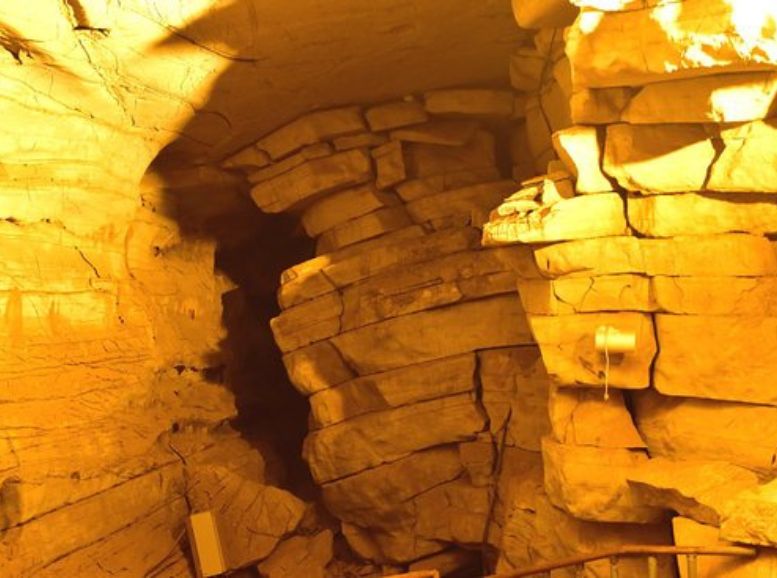
Approaching Belum Caves, prepare to be awestruck by Simhadwaram, the Lion’s Gate. This natural archway isn’t your ordinary entrance. Carved by time itself, the rock formations eerily resemble a lion’s head, a majestic guardian welcoming you into the subterranean realm. Simhadwaram isn’t just a visual marvel; it’s a testament to history, silently standing watch over countless explorers and monks who’ve ventured through its threshold for centuries. It’s the perfect introduction to the extraordinary geological wonders that lie hidden within Belum Caves.
Kotilingalu Chamber:
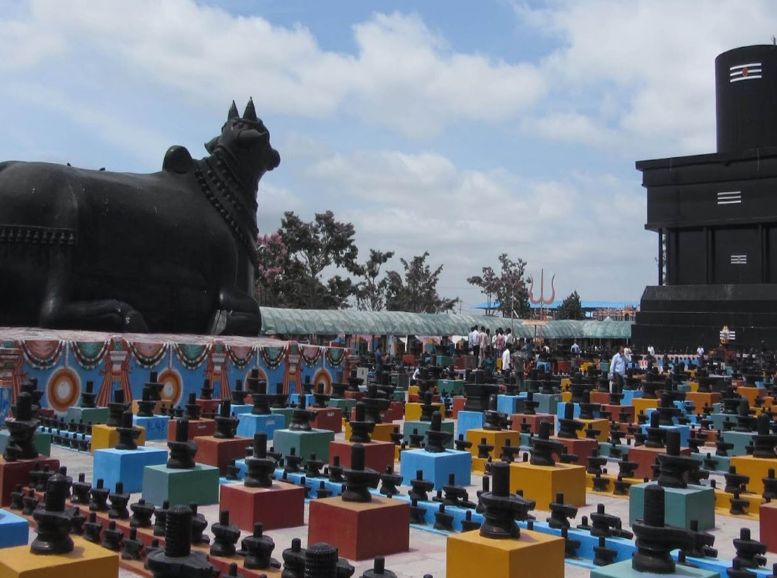
The Kotilingalu Chamber within Belum Caves is a breathtaking testament to nature’s artistry. Named for the countless stalactites that resemble Shiva Lingams, this chamber evokes a sense of awe and spiritual wonder. Imagine a vast cavern ceiling adorned with these natural formations, creating the illusion of a temple sculpted by time itself. The sheer number and variety of stalactites hanging like ethereal chandeliers capture the light in a mesmerizing display. As you explore the chamber, the filtered light paints the scene with an otherworldly glow, leaving you humbled by the power and artistry of nature that has unfolded over millions of years.
Patalaganga, Belum Caves:
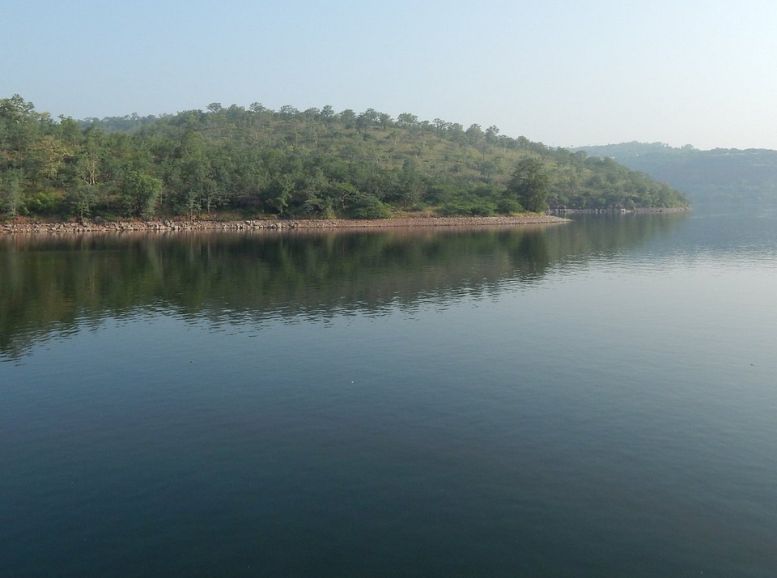
Venture deeper into Belum Caves and be captivated by Patalaganga, a mysterious underground stream. This enigmatic river winds its way through the caverns, appearing and vanishing at points, fueling local legends about its origins and course. Patalaganga’s presence breathes life into the caves. The cool, moist environment it fosters nurtures unique cave life, while the gentle gurgle of the water creates a hauntingly beautiful soundscape. Exploring Patalaganga is a highlight for many, offering a glimpse into the remarkable interplay between water and rock that has sculpted this subterranean wonderland.
Dhyan Mandir (Meditation Hall):
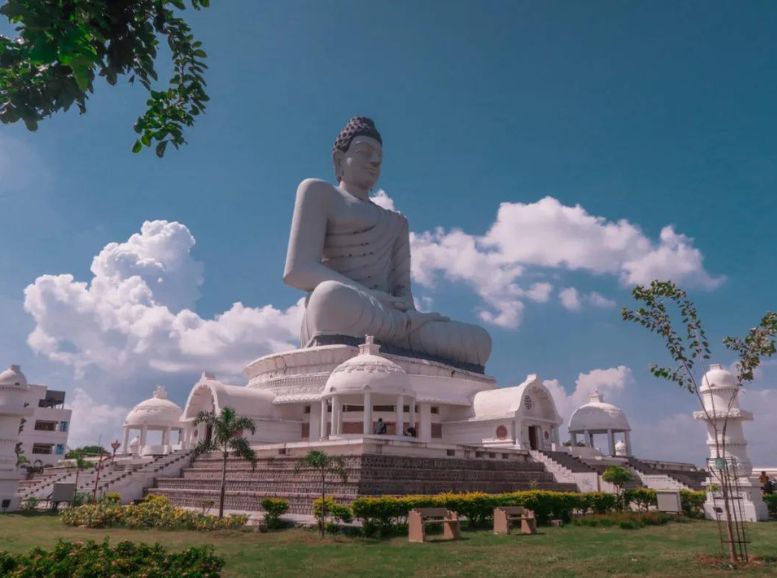
Delve deeper into Belum Caves and discover the Dhyan Mandir, or Meditation Hall. This spacious chamber transcends its geological origins, whispering tales of past spiritual practices. Jain and Buddhist monks once used this serene space for meditation and reflection. The natural acoustics provide a calming soundscape, while the peaceful environment fosters introspection. Imagine standing within Dhyan Mandir, feeling the weight of centuries of spiritual energy that permeates its very walls. The gentle play of light and shadow creates a sanctuary for meditation, allowing visitors to connect with the past and find a moment of quiet contemplation amidst their exploration. Dhyan Mandir serves as a poignant reminder of Belum Caves’ historical significance, a place where diverse cultures have left their mark on this subterranean wonderland.
Saptasvarala Guha (Musical Chamber):
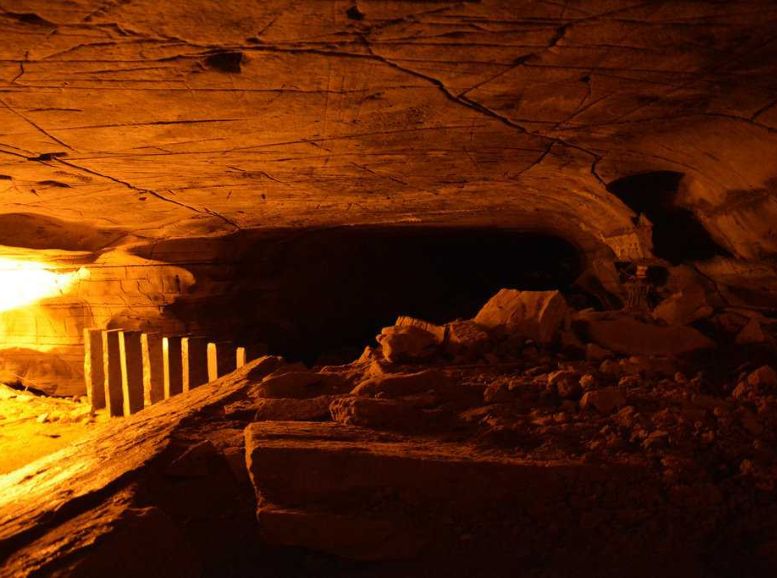
Belum Caves hold a hidden gem – the Saptasvarala Guha, or Musical Chamber. This aptly named chamber isn’t just a geological marvel; it’s a natural symphony waiting to be played. Imagine stalactites arranged like a xylophone, each one producing distinct musical notes when tapped. This acoustic wonder has captivated visitors for centuries. The Saptasvarala Guha showcases not only the exquisite natural architecture of the caves but also offers an interactive experience. Become a conductor in this subterranean concert hall, creating your own music with the gentle taps against the musical formations.
Thousand Hoods:
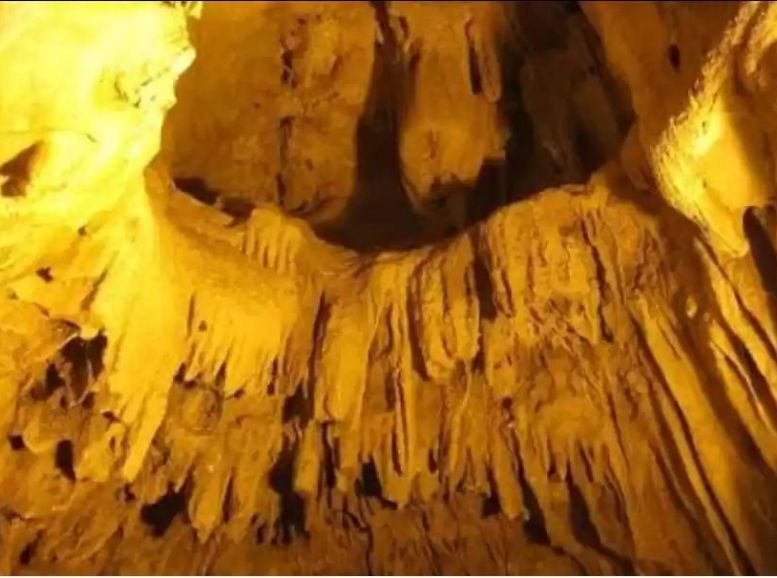
Within Belum Caves lies a mesmerizing spectacle known as Thousand Hoods. This cavern isn’t just another chamber; it’s a gallery of nature’s artistry. Imagine a space filled with stalactites that resemble the hoods of countless cobras, creating a visually stunning and almost dreamlike landscape. Millions of years of water patiently dripping through limestone have sculpted these intricate formations. As you explore Thousand Hoods, the interplay of light and shadow dances on the formations, bringing them to life with ever-changing patterns and textures. This chamber is a double treat: a geological marvel for the curious explorer and a photographer’s paradise for those who want to capture the breathtaking beauty of nature’s handiwork.
Local Experiences:
Village Tours:
- Witness daily activities in traditional homes.
- Interact with residents to learn about customs and traditions.
- Discover the art of pottery, weaving, and basket making.
- Try your hand at these crafts and take home unique souvenirs.
Culinary Delights:
- Savor Andhra’s signature dishes like Pesarattu, Pulihora, and Gutti Vankaya Kura.
- Indulge in authentic flavors at local eateries and family-run restaurants.
- During mango season (April-June), explore Banaganapalli orchards and relish the world-famous mangoes.
Festivals & Celebrations:
- Participate in local festivals like Ugadi, Sankranti, and Dasara.
- Witness traditional music, dance performances, and cultural programs.
- Attend annual temple festivals in Tadipatri and Yaganti, filled with elaborate rituals and processions.
Nature & Outdoor Activities:
- Embark on guided treks or nature walks amidst rolling hills and lush greenery.
- Spot resident and migratory birds with a local guide in nearby forests and water bodies.
Spiritual & Wellness Experiences:
- Join meditation or yoga sessions within the caves or serene spots nearby.
- Participate in guided sessions offered at local ashrams or wellness centers.
- Visit temples for their architectural beauty and spiritual significance.
- Attend spiritual talks, bhajans, and discourses to delve deeper into Hindu philosophy and practices.
Travel tips:
Know Before You Go: Check the caves’ opening hours and plan your trip accordingly. Arriving early allows for a leisurely exploration and avoids crowds.
Dress for Adventure: Opt for lightweight, breathable clothing and comfortable walking shoes with good grip. The caves can be uneven, so proper footwear is crucial.
Hydration is Key: Bring plenty of water, especially during hot weather. Exploring caves can be physically demanding, so stay hydrated to avoid discomfort.
Pack Smart: Essentials like sunscreen, hats, sunglasses, insect repellent, and a first-aid kit will keep you protected from the elements and minor mishaps.
Plan Your Ride: Decide on your transportation (car, bus, taxi) and plan your route in advance if driving. Public transport options may be available for nearby attractions.
Book Your Stay: If staying overnight, secure accommodation well in advance, particularly during peak seasons. Options range from budget-friendly guesthouses to luxurious resorts.
Respect Local Customs: Be mindful of local customs, traditions, and religious practices when visiting temples or sacred sites. Dress modestly and follow any guidelines provided by temple authorities.
Weather Watch: Stay updated on weather forecasts, especially during monsoons when heavy rains can disrupt travel. Be prepared to adjust your plans based on weather conditions.
Safety First: Follow safety guidelines provided by authorities for cave exploration, trekking, and other outdoor activities. Stay on designated paths, avoid risky behavior, and be cautious in unfamiliar terrain.
Travel Responsibly: Minimize your environmental impact by properly disposing of waste, avoiding littering, and leaving no trace of your visit. Respect local wildlife and ecosystems for a sustainable travel experience.
Conclusion
Our Belum Caves adventure concludes, leaving us with a kaleidoscope of experiences in Andhra Pradesh. From the subterranean marvels to the cultural vibrancy of nearby villages, each destination offered a unique chance to explore, discover, and be captivated by the beauty of nature and history. Belum Caves, with its labyrinthine passages, awe-inspiring formations, and historical significance, cast a spellbinding presence. Exploring these ancient chambers wasn’t just a geological wonder; it was a glimpse into the lives of past civilizations and their spiritual practices. Beyond the caves, the region unfolds its treasures – the architectural grandeur of Gandikota Fort, the delectable flavors of local cuisine, and the joyous energy of traditional festivals. Each experience deepened our connection to Andhra Pradesh’s cultural heritage and natural splendor. As travelers, we’re privileged to embark on such journeys, to create memories that resonate for a lifetime. To craft your own Belum Caves adventure, visit Xplro.com
FAQs
- What are Belum Caves?
- Belum Caves, situated in the Kurnool district of Andhra Pradesh, are a network of underground caverns known for their unique geological formations, historical significance, and cultural heritage.
- What are the dimensions of Belum Caves?
- Belum Caves extend approximately 3.5 kilometers in length, making them the second-largest cave system in India. However, only about 1.5 kilometers of the caves are open to the public for exploration.
- What are the operational hours of Belum Caves?
- Belum Caves are typically open from early morning until evening, though specific timings may vary depending on the season and local regulations. It’s advisable to verify the official hours before planning a visit.
- Are guided tours available at Belum Caves?
- Yes, guided tours led by experienced guides are available for visitors at Belum Caves. These tours offer insights into the caves’ geological features, historical significance, and safety protocols.
- Is photography permitted inside Belum Caves?
- Photography for personal use is allowed inside Belum Caves. However, special permission may be required for tripods and professional photography equipment. Flash photography is discouraged to preserve the cave environment.
- Are there any restrictions for visitors at Belum Caves?
- While Belum Caves are open to the public, certain restrictions are in place to ensure visitor safety and cave preservation. These may include guidelines regarding touching formations, littering, and noise levels.
- Are Belum Caves suitable for children and the elderly?
- Belum Caves can be explored by visitors of all ages, but some sections may feature narrow passages and uneven terrain. It’s advisable to assess individual mobility and comfort levels beforehand.
- What is the recommended attire for visiting Belum Caves?
- Visitors should wear comfortable clothing and sturdy walking shoes suitable for navigating uneven surfaces and low ceilings. Carrying a light jacket or shawl is also advisable, as cave temperatures may be cooler.
- Are facilities available near Belum Caves?
- Yes, facilities such as parking, restrooms, drinking water, and food stalls are available near Belum Caves to cater to visitors’ needs.
- Can Belum Caves be combined with other nearby attractions?
- Yes, visitors can explore nearby attractions such as Gandikota Fort, Yaganti Temple, Banaganapalli, Ahobilam, and Tadipatri to enhance their trip to Belum Caves.
- What is the ideal time to visit Belum Caves?
- The best time to visit Belum Caves is during the cooler months, from October to March, to enjoy pleasant weather and outdoor activities while avoiding the summer heat.
- How can I reach Belum Caves?
- Belum Caves are accessible by road from major cities like Bangalore, Hyderabad, and Anantapur. The nearest railway station is Tadipatri, and the nearest airport is in Bangalore.





